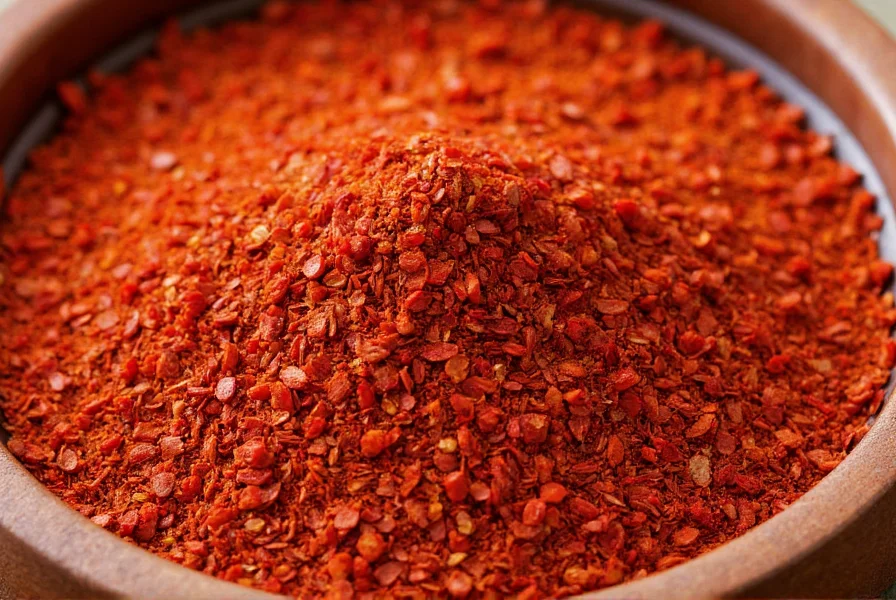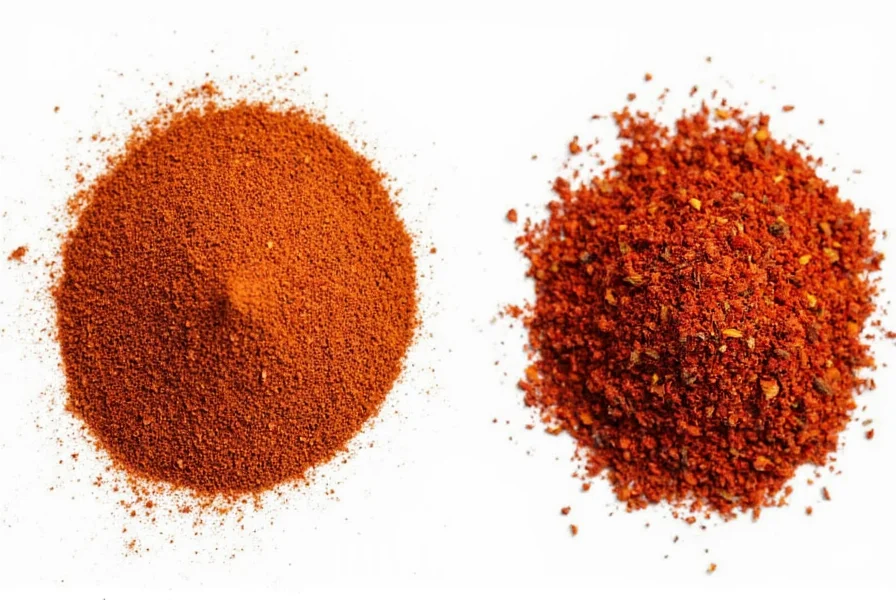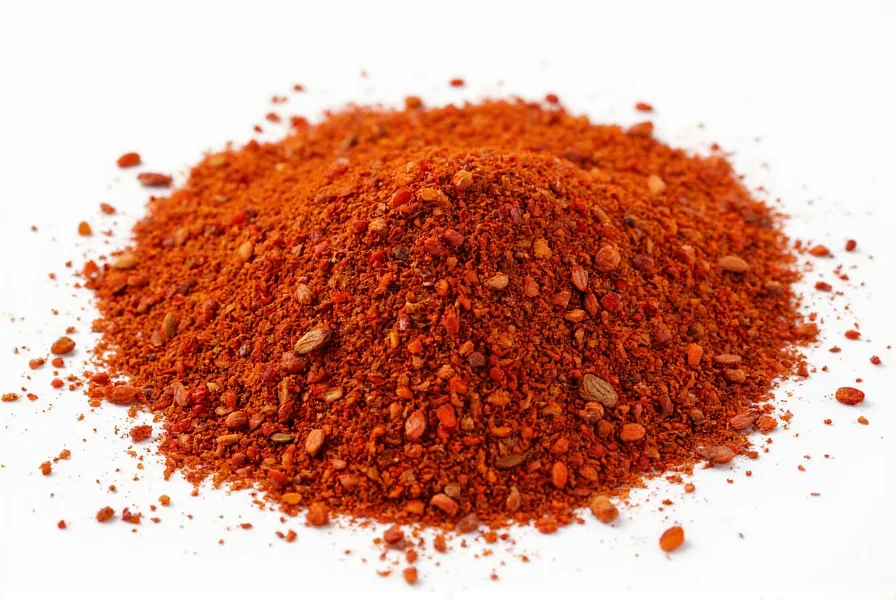Aleppo pepper flakes, also known as Halaby pepper or pul biber, represent one of the most distinctive spices in Middle Eastern cuisine. Unlike the generic red pepper flakes found on pizza parlors across America, authentic Aleppo pepper offers a complex flavor profile that has captivated chefs and home cooks seeking to elevate their dishes with nuanced heat.
Origins and Historical Significance
Named after the ancient Syrian city of Aleppo (now Halab), these peppers have been cultivated in the region for centuries. Traditionally grown in the fertile lands surrounding Aleppo and extending into southeastern Turkey, the peppers undergo a specific preparation process that contributes to their unique characteristics. After harvesting, ripe peppers are slit, seeded, and sun-dried for several days before being coarsely crushed and preserved in olive oil with a touch of citric acid or salt.

Flavor Profile and Heat Level Comparison
Understanding Aleppo pepper flakes heat level is essential for proper culinary application. With a Scoville rating between 10,000–30,000 units, they sit comfortably between mild paprika (500–1,000 units) and cayenne pepper (30,000–50,000 units). This moderate heat allows the pepper's complex flavor to shine through rather than overwhelming dishes with pure spiciness.
| Spice Type | Scoville Units | Flavor Characteristics |
|---|---|---|
| Aleppo Pepper Flakes | 10,000–30,000 | Fruity, slightly salty, with citrus notes |
| Standard Red Pepper Flakes | 30,000–50,000 | Sharp, one-dimensional heat |
| Cayenne Pepper | 30,000–50,000 | Bright, intense heat |
| Paprika | 500–1,000 | Sweet, earthy, mild |
Aleppo Pepper Flakes vs Red Pepper Flakes: Key Differences
When considering Aleppo pepper flakes vs red pepper flakes, several critical distinctions emerge. Standard red pepper flakes typically consist of various Capsicum annuum varieties, often including cayenne, creating a sharper, more aggressive heat. Aleppo pepper, derived from a specific Capsicum annuum variant, delivers a more rounded experience with its characteristic fruitiness and subtle saltiness.
The texture also differs significantly. Authentic Aleppo pepper flakes maintain a coarser grind with visible flecks of deep red skin, while commercial red pepper flakes tend to be finer and more uniformly crushed. This textural difference affects how the spice integrates with food and releases its flavor during cooking.
Culinary Applications and Pairing Suggestions
Professional chefs and home cooks seeking to understand how to use Aleppo pepper in cooking will appreciate its versatility. The spice shines in applications where its nuanced flavor can complement rather than dominate:
- Mediterranean dishes: Sprinkle over hummus, baba ganoush, or roasted vegetables
- Meat preparations: Create rubs for lamb, chicken, or beef with complementary spices like cumin and coriander
- Egg dishes: Elevate scrambled eggs or frittatas with a pinch
- Bread and doughs: Incorporate into flatbreads or pizza crusts
- Seafood: Pair with grilled fish or shrimp for a subtle heat
Unlike standard red pepper flakes that often get added at the end of cooking, Aleppo pepper benefits from being introduced earlier in the cooking process to allow its complex flavors to meld with other ingredients.
Finding Quality Aleppo Pepper Flakes
When exploring where to buy Aleppo pepper flakes, look for products that maintain the traditional preparation method. High-quality versions should appear deep red (not brick red or brown), have a slightly oily sheen from the preservation process, and contain visible flecks of pepper skin rather than a fine powder.
Check for freshness by examining the aroma—it should smell fruity and slightly earthy rather than musty or stale. Authentic Aleppo pepper often includes a small amount of salt or citric acid in the ingredient list, reflecting traditional preservation methods. Avoid products listing additional spices or fillers, which dilute the distinctive flavor profile.

Storage Recommendations for Maximum Freshness
Proper Aleppo pepper storage tips ensure longevity of flavor. Store in an airtight container away from direct light and heat sources. The traditional preservation in olive oil means quality Aleppo pepper already contains some oil, which helps maintain freshness. For longest shelf life, keep refrigerated after opening—this prevents the oil from going rancid and preserves the vibrant color and flavor.
Unlike many dried spices that gradually lose potency, properly stored Aleppo pepper can maintain its distinctive flavor for up to two years. Check periodically for any off smells or color changes that might indicate degradation.
Substituting Aleppo Pepper When Unavailable
When searching for an Aleppo pepper flakes substitute, consider these options based on what aspect of the flavor profile matters most for your recipe:
- Fruity component: Mix equal parts sweet paprika and a pinch of cayenne
- Saltiness: Add a small amount of flaky sea salt to your substitute blend
- Complete substitute: Combine 2 parts smoked paprika, 1 part sweet paprika, and 1/2 part cayenne
Maras pepper from Turkey makes the closest substitute, sharing similar growing regions and processing methods. If using standard red pepper flakes as a last resort, reduce the quantity by half and add a pinch of salt and lemon zest to approximate the complex flavor profile.
Frequently Asked Questions
Are Aleppo pepper flakes hotter than regular red pepper flakes?
No, Aleppo pepper flakes are actually milder than standard red pepper flakes. With a Scoville rating of 10,000–30,000 units, they're significantly less hot than the 30,000–50,000 units typical of commercial red pepper flakes. The heat in Aleppo pepper is more rounded and integrated with its fruity flavor rather than sharp and one-dimensional.
Can I substitute Aleppo pepper for red pepper flakes in recipes?
Yes, but with adjustments. Since Aleppo pepper is milder and more flavorful, you'll typically need to use 1.5 times the amount of Aleppo pepper to achieve similar heat levels. For best results, consider the flavor profile you're trying to achieve—Aleppo pepper adds fruitiness and subtle saltiness that standard red pepper flakes lack.
Why is Aleppo pepper so expensive compared to regular red pepper flakes?
Authentic Aleppo pepper commands a higher price due to its specific growing region, traditional sun-drying process, and limited production. The ongoing conflict in Syria has disrupted traditional supply chains, making genuine Aleppo pepper less available. Additionally, the careful preparation method involving olive oil preservation adds to production costs compared to mass-produced red pepper flakes.
Does Aleppo pepper contain actual salt?
Traditional Aleppo pepper preparation includes a small amount of salt during the preservation process, which contributes to its characteristic slightly salty taste. However, the salt content is minimal—typically less than 5% of the total weight. If you're monitoring sodium intake, check the ingredient list, as some commercial versions may add more salt than traditional preparations.











 浙公网安备
33010002000092号
浙公网安备
33010002000092号 浙B2-20120091-4
浙B2-20120091-4